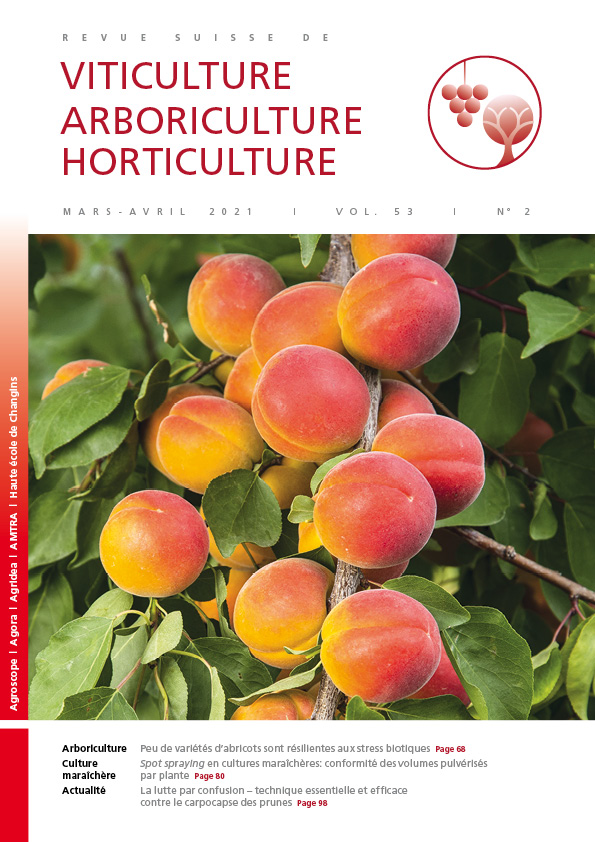
Issue 2 - March - April 2021

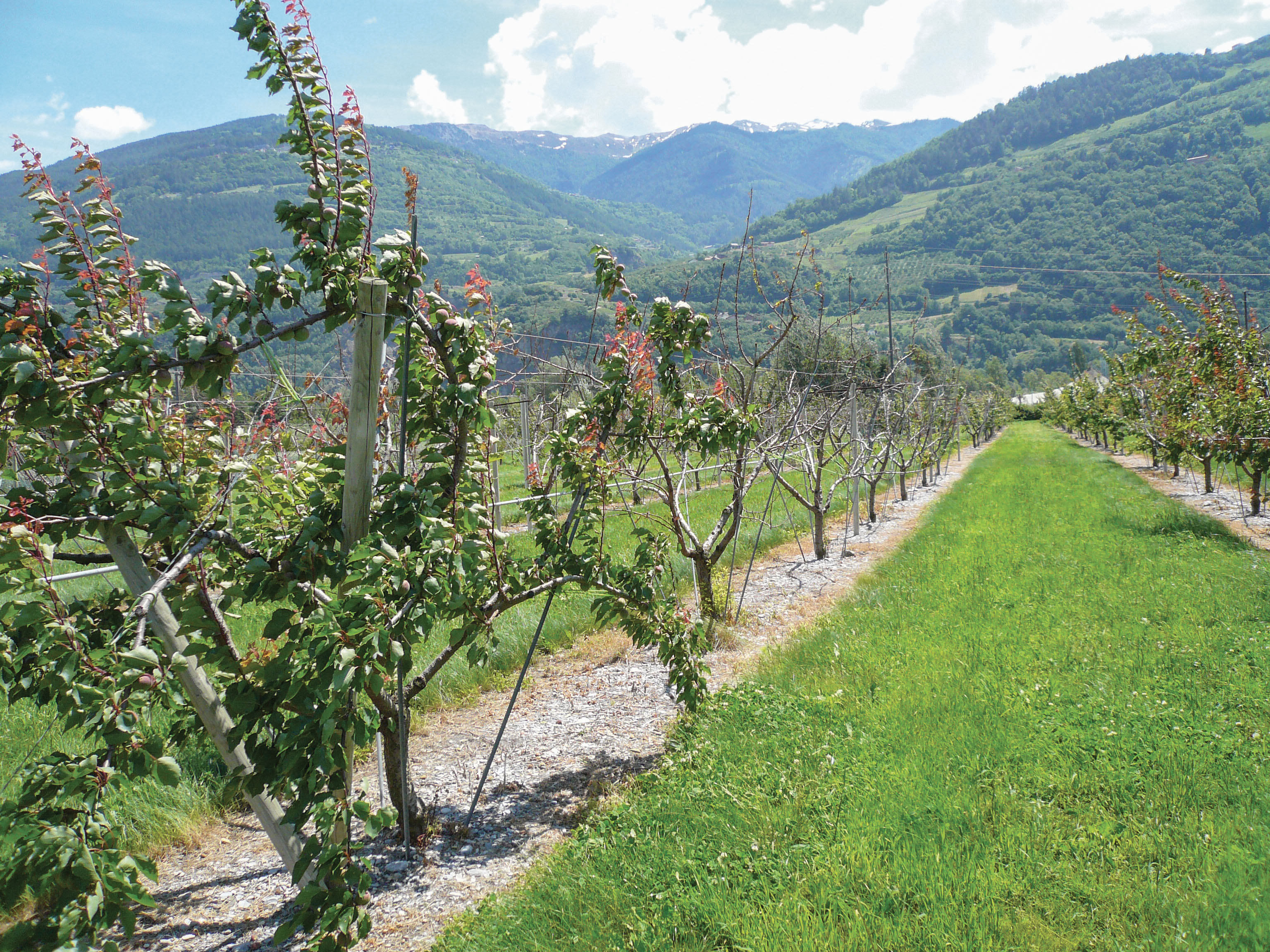
Abstract in open access
For several years now, growing societal pressure has demanded more organic production, or at least a reduction in the use of synthetic plant protection products. One of the biggest challenges to address this pressure is whether fruit production systems are resilient in the absence of plant protection. The objective of this study is to assess the resilience of 51 modern apricot varieties against biotic stresses by comparing the impact of a lack of plant protection on the production of these varieties and to develop categories of varietal susceptibility to various diseases and pests. No fungicide and insecticide treatment was applied during the 2 years of trials. In such a situation, only the four varieties Vallamust, Apridelice, Delice Cot and ML 3-4 proved profitable. The development of varietal susceptibility categories highlighted the important impact of bacterial canker on yield reduction. However, these results remain to be confirmed in the long term, so that a list of varieties suitable for resilient apricot production to biotic stress can be recommended.
Keywords: resilience, apricot, varieties, disease and pest, susceptibility, genetic pool
E-Mail: danilo.christen@agroscope.admin.ch
Adress: Agroscope, 1964 Conthey
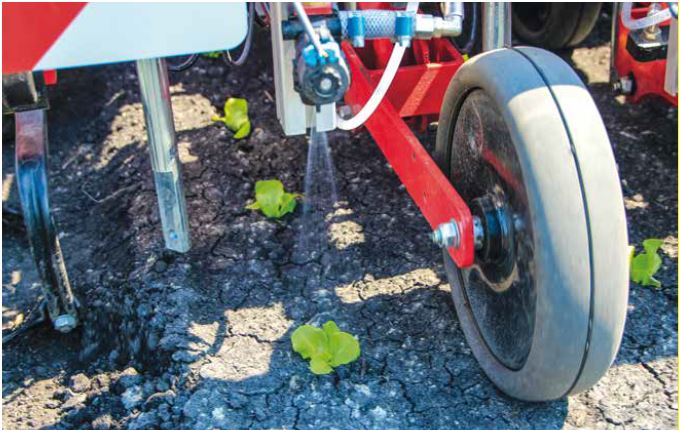
Abstract in open access
Agroscope is testing a prototype for spot-spraying plantprotection products on different vegetable row crops. The *prototype allows the targeted application of insectides or fungicides on the crop alone and the hoeing of weeds in or between the rows. The volume to be sprayed depends on the area occupied by the crop, which varies according to the stage of development of the plants. In a series of tests, the amount of product actually sprayed with the prototype was compared to the expected amount calculated before the treatment. On plants in early stages of development the prototype sprays the product with an accuracy of 70–100%, which guarantees a high-quality application for the first or second treatment, depending on the crop.
Keywords: Spot spraying, growth stages, water rate, vegetables, field trial
E-Mail: pascal.haberey@agroscope.admin.ch,
Adress: Agroscope, 8820 Wädenswil
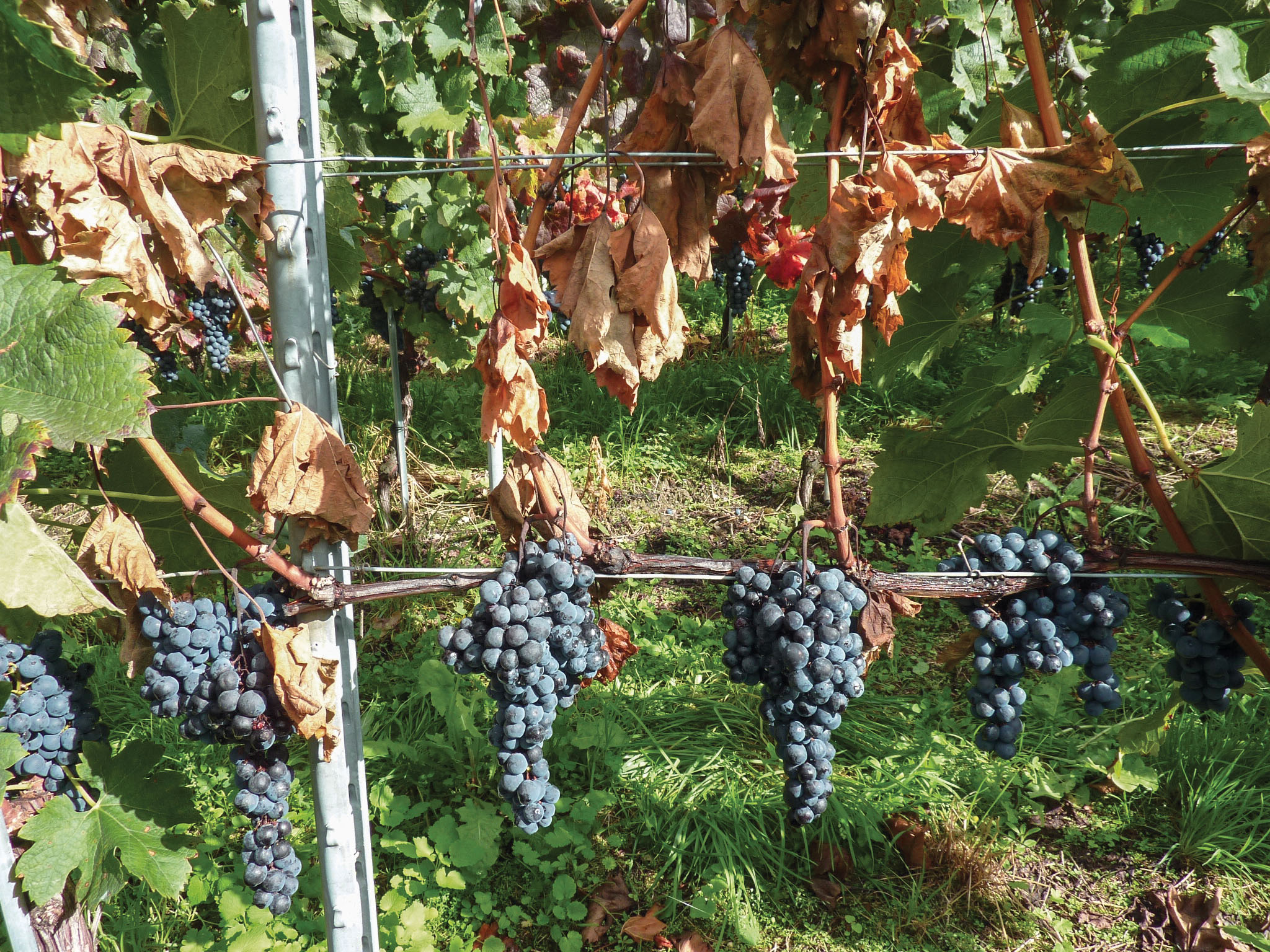
Abstract in open access
The study aimed to characterise the biochemical changes during the raisining of the berries of two grape varieties – Syrah and Merlot – paying particular attention to tartaric and malic acid development. Grape berries were dried at different temperatures, i.e. at 9, 15, 21 and 27 ºC. Raisining caused a loss of berry weight of up to 45% and an increase in sugar concentration of the order of 70%. Malic acid and tartaric acid concentrations in the berries fell by around 60% and 49% respectively. The decrease in tartaric acid came as a surprise, since it is not normally metabolised in the berry after the onset of ripening. Potassium analyses provided the explanation: tartaric acid concentration fell owing to its precipitation inside the berries or during sampling in the form of potassium bitartrate. This discovery allowed us to rule out tartaric acid catabolism in the berry. This study tends to demonstrate that tartaric acid precipitation can cause significant analytical bias in physiological experiments. Current analytical methods seem inappropriate, and lead to mutually contradictory results between numerous studies.
Keywords: berry development, berry drying, grape ripening, potassium, tartaric acid.
E-Mail: markus.rienth@changins.ch
Adress: School of Engineering at Changins
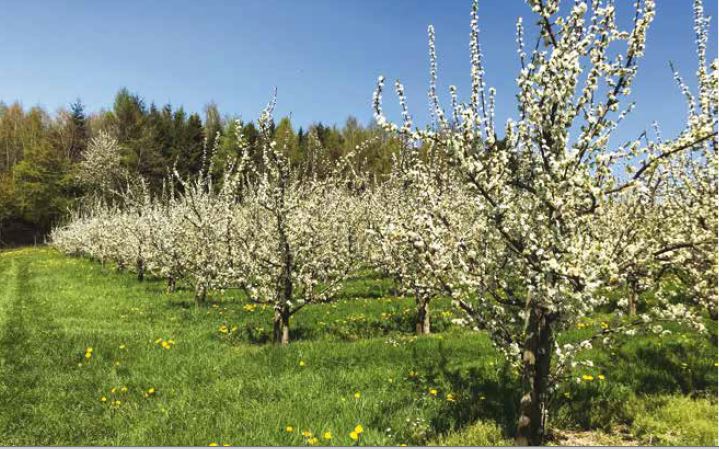
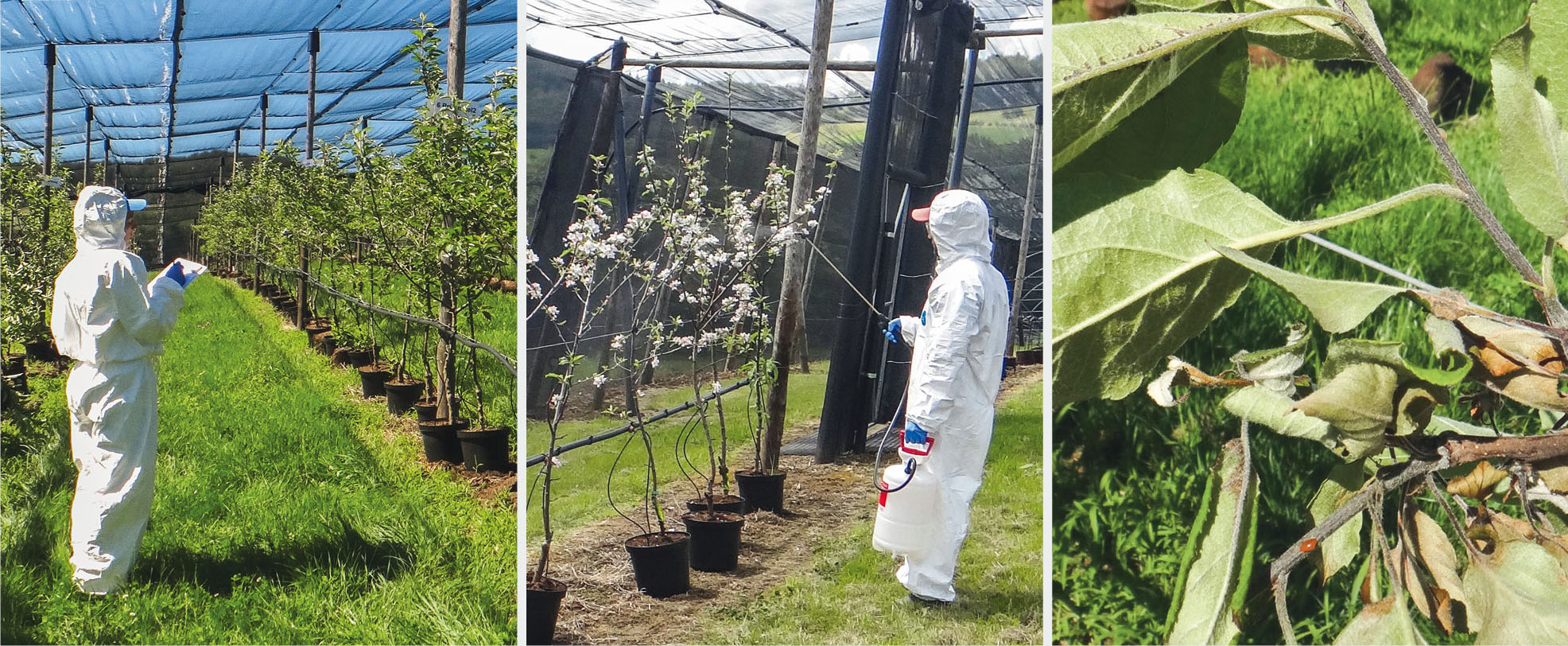
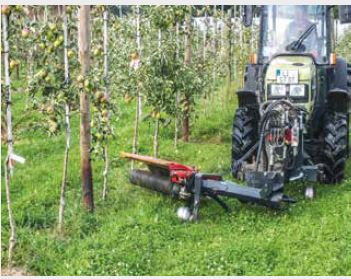
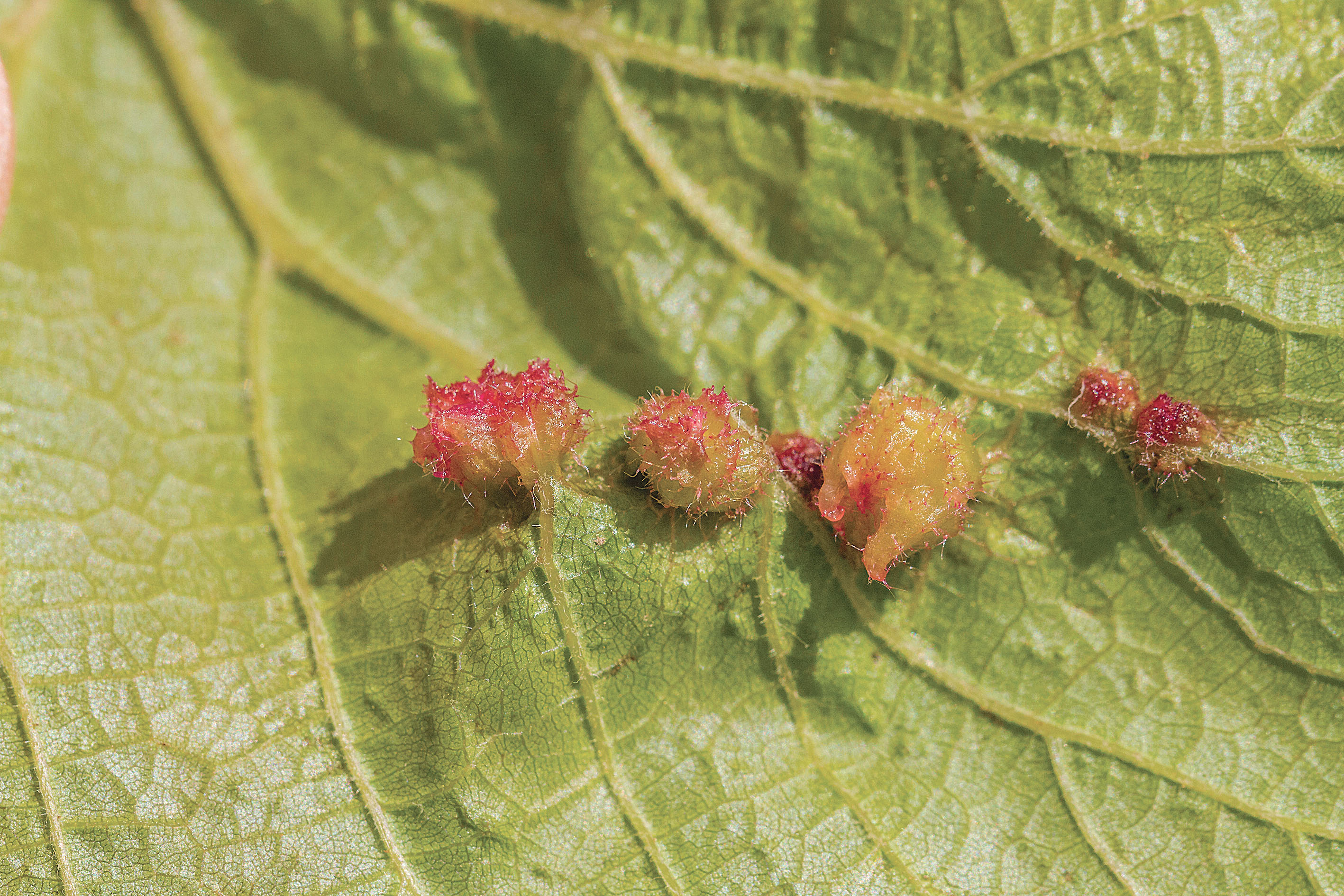
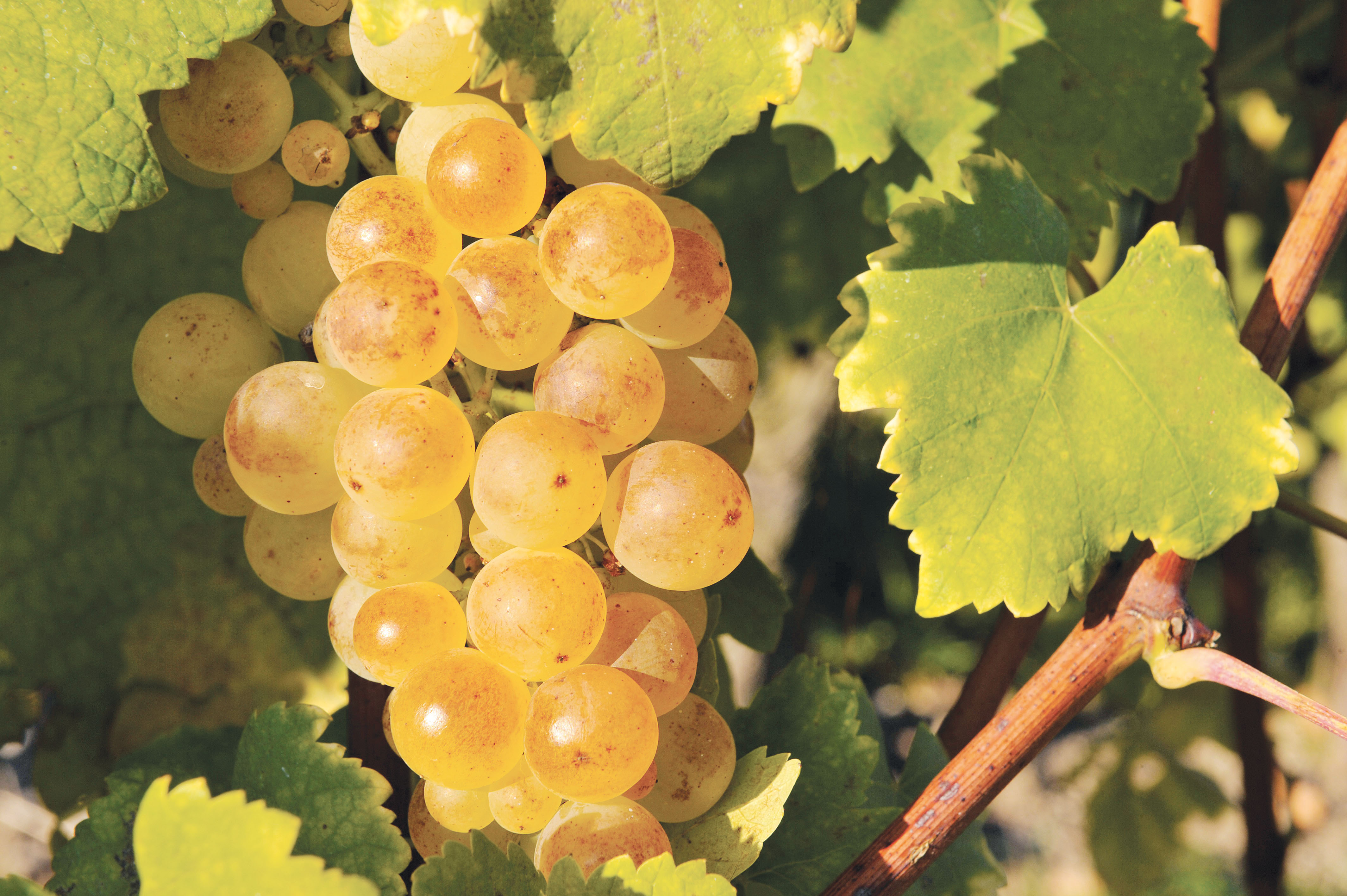

 Download of full issue
Download of full issue
 Download article
Download article Download article
Download article